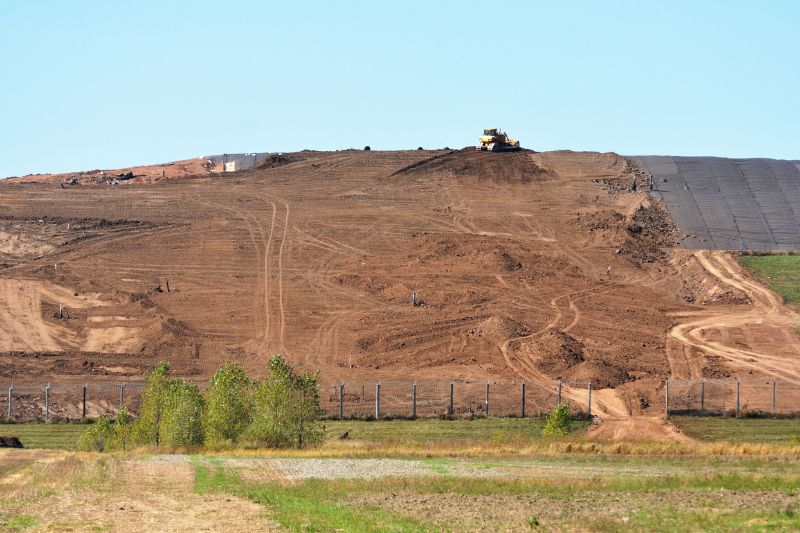A landfill is a final control measure of waste disposal on or in the land. You might be familiar with the term, but did you know that there are different types of landfills?
In case you didn’t, you read that right, and a sanitary landfill is just one of these types.
So, what is a sanitary landfill and what does it entail? Well, that’s the focal point of this article.
We still have other types of landfills like industrial and municipal solid waste landfills, but for this article, we will only focus on the sanitary type.
Let’s dig right in!
What Is A Sanitary Landfill?
A sanitary landfill is a pit with a protected bottom where trash is buried in layers and compressed to make it more solid. The main purpose of this landfill is to ensure waste is safe by reducing the harm from accumulated waste and allowing safe decomposition.
The alternating layers of garbage and soil aid in hastening decomposition. Because methane, a toxic gas, is produced from decomposition, it is collected in the landfill to generate electricity instead of being released into the atmosphere. The sanitary landfill also uses a clay liner to isolate the trash from the environment.
Besides, it involves well-designed engineering methods to protect the environment from contamination by solid or liquid wastes. When the land used as the sanitary landfill is full, impervious clay is used to seal it, and if deemed safe, that area can be used for other purposes.
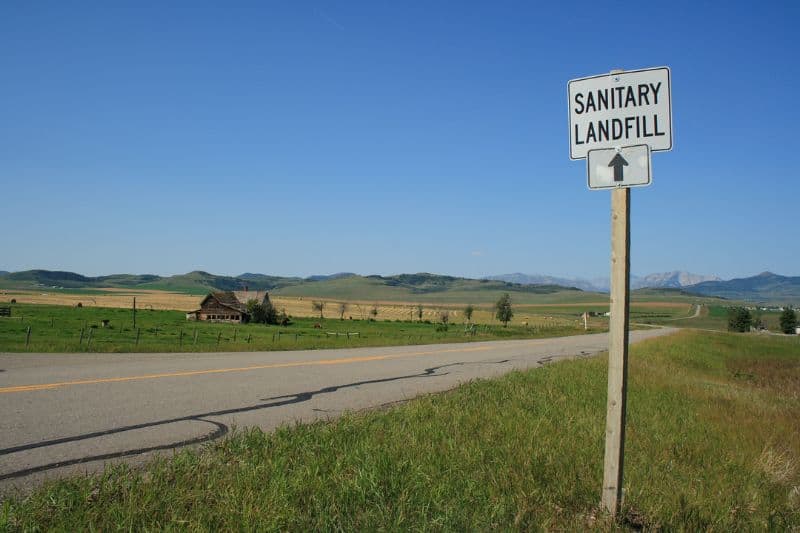
How Does A Sanitary Landfill Work?
Sanitary landfills operate by layering waste in a large hole. There are different levels of layering of waste to facilitate the decomposition of the materials and trap toxic gases released from the process. The layers are made in such a way that the bottom part has the smallest volume, with the top part taking the bigger volume to avoid collapsing of the land.
The first layer is called the liner system. This is the lowest layer and the first one used in laying a foundation for the sanitary landfill. The process entails the application of compact and well-dense clay to prevent the seeping in or out of liquids. It is for this reason that this clay is completely impervious.
This modernized type of sanitary landfill is also fitted with high-density plastic which is applied on top of the clay for reinforcement. This engineering design is to make certain there is no room for the penetration of liquids, thus preventing contamination of the underground water.
The second layer is the drainage system. The drainage system takes care of the liquid produced from the decomposition of some waste materials. Due to the toxicity of this liquid, it should not seep past the liner layer.
The drainage layer aids in draining away this liquid to prevent it from getting close to the liner system. Moreover, rainfall and snow may also seep from the top surface to the landfill and also need to be drained away.
These liquids may contain contaminants from the waste materials that can corrode the liner system and contaminate the soil and water below the landfill. In reducing this risk, the sanitary landfill is fitted with perforated pipes on top of the liner layer to collect all the liquids that find their way to the bottom of the landfill through leaching, thus the name leachate. The plumbing system then directs the leachate to treatment plants to undergo treatment for reuse.
The third layer is the gas collection system. In the same way that liquids are produced, gases are also released through natural processes. Methane is the most common of these gases.
Methane is a gaseous hydrocarbon that is very volatile as well as toxic, and thus when released into the atmosphere, contributes to global warming and can harm the overall environmental health.
There are, therefore, extraction pipes in this layer that trap methane gas and transport it to treatment plants to treat the gas and thereafter, use it to produce electricity and to power various processes.
The fourth layer contains the trash itself. This is the largest layer and is also the topmost. Periodically, trash from various sources is brought in by the various garbage collection companies and dumped in this layer. To avoid taking too much space, the garbage disposed of is compacted on a daily basis.
Once this has been done, a layer of compacted soil is applied to the surface of the sanitary landfill. Soil does a good job of containing bad smells and the growth of harmful microorganisms such as pests and flies. Also, the compact soil keeps away windblown debris.
Landfills have been known to be as deep as hundreds of feet and can take years before they are fully filled after compaction. In case a sanitary landfill gets filled, landfill capping is done.
And in case you’re wondering what that means, landfill capping is the process of capping or topping the landfill with synthetic plastic or clay, just as the bottom of the landfill. The aim of this is to prevent methane gas from escaping to the atmosphere as well as bad odors.
Further, this layer is reinforced with a layer of topsoil, about 2-3 feet, and vegetation is planted. When all this is completed, the land is reclaimed and can be used for other purposes.
In spite of all these processes, due to the toxicity of the waste buried deep down, there is still a chance of contamination, either of the waterways or the soil, which affects plants, some of which are edible to both humans and animals.
To avoid this, sanitary landfills that have been closed and repurposed for gardening or any other form of crop planting are first monitored for decades, and the soil is regularly tested for irregularities.
If the plants are dying, then there might still be methane gas being released from the land. Once it is proved that the land is safe, the area is open for other various uses through limited.
Heavy-duty projects such as the construction of housing units are not at all allowed since the ground will have to be scrapped for the establishment of a suitable foundation. Simple land-intensive projects such as open spaces, nature parks, and golf courses are encouraged on such lands.
Differences Between Sanitary Landfill and Open Dumping
Now that you understand the basics of a sanitary landfill, let’s dig deep and examine the distinctions between it and open dumping.
1. Sanitary Landfills Are only Set up By the Authority of The Local Government or The State
Setting up a sanitary landfill is not a personal or individualized decision but a societal one. The religious leaders, the non-governmental organizations, and the public must all be consulted before it is set up.
That’s much different from how an open dumping is established. In the case of the latter, consent for setup is not processed officially by the relevant authority. Instead, people driven by the need for convenience waste disposal set up their own open dumping sites outside their houses.
This site is then left open for small organisms such as rats and flies to make their habitat. These open dumping sites can be found anywhere in people’s compounds, marketplaces, and even public places like schools and churches.
2. Soil Is a Major Component of Sanitary Landfills, Given that It Is Applied Daily or On a Regular Basis
Soil is usually used in sanitary landfills to keep bad odors and pests off the land surface. This ensures that the land near the landfill can be used by others without pollution of the air or infestation by pests.
For open dumping sites, however, there is no soil applied. Open dumps are just holes dug to accumulate waste and no amount of operational activity such as the application of compact soil is done. Hence, they pose a greater danger to the environment in terms of bad odors containing harmful contaminants such as methane.
3. Monitoring Is a Key Part of Any Sanitary Landfill
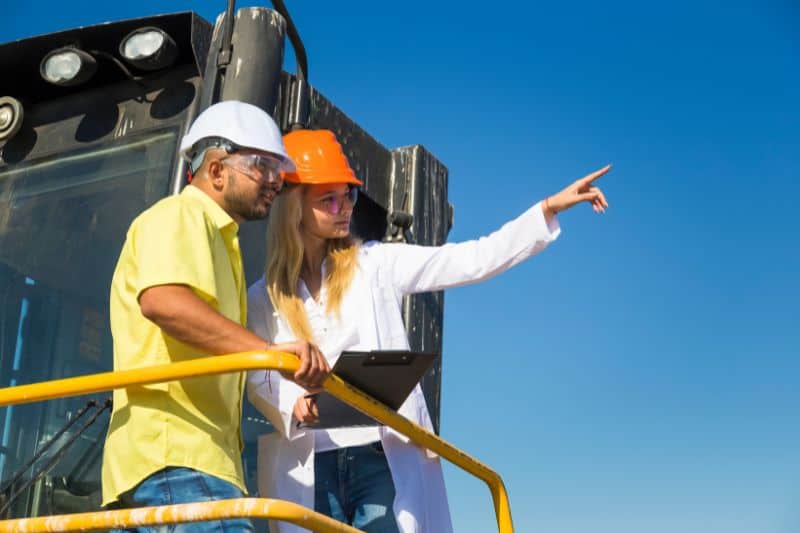
Monitoring a sanitary landfill is so important to the extent that engineers are contracted to oversee the establishment of the site.
With the application of the compressed clay in the bottom layer, engineers are able to monitor whether there is any water seeping from the ground up to the landfill or the landfill down to the ground since this would cause a health hazard to the underground water.
In the second layer, the engineers monitor the drainage of all liquids accumulated in the landfill. Proper drainage is essential to ascertain there is no water seeping to the bottom layer and subsequently to the underground water.
Methane gas in its raw form is toxic to the environment since, upon release into the atmosphere, it contributes to global warming and contamination of the nearby environment. Therefore, it is kept in check by fitting the landfill with a gas collection system.
For open dumps, there is no monitoring at all. Once a pit has been dug, there is absolutely no monitoring of what is disposed of and in what manner. It is for this reason that large open pits have led to contamination of the land and water supply. Moreover, open dumps do not have treatment plants for the treatment of liquids or gases from the dump site.
4. Open Dumps Are Small in Size and Are Mostly Used as Domestic Waste Disposals
Open dumps are relatively shallow, going to a few feet deep. Due to this, they are more in number compared to sanitary landfills. Approximately every household has an open dump in most countries.
On the other hand, sanitary landfills are big. One of the biggest ones is in California and is about 500 feet deep. It is home to over 40% of the state’s waste management system.
Landfills take a long time to dig up as opposed to open dumps and involve a lot more than human labor. For example, heavy machinery is needed to get to the deep depths. So, the landfills serve communities and states rather than a few individuals.
Are Landfills a Good Idea?
Landfills are huge piles of garbage that not only produce an awful smell but also look very bad in the city. They produce harmful gases which have a negative effect on the environment and human health.
On the other side, there are also a few positive effects of landfills. Let’s quickly check them out.
1. Keep Surroundings Clean
A dedicated space is very much required where waste can be dumped to keep cities, towns, and districts clean. Any locality that doesn’t have a landfill or when people know there is no efficient waste management system in place, they would simply dump waste in any open vacant spots.
This uncontrolled waste disposal would be much unhealthier for humans and the environment. With properly maintained landfill facilities, local trash will be dealt with locally instead of shifting to other countries.
2. Energy Source
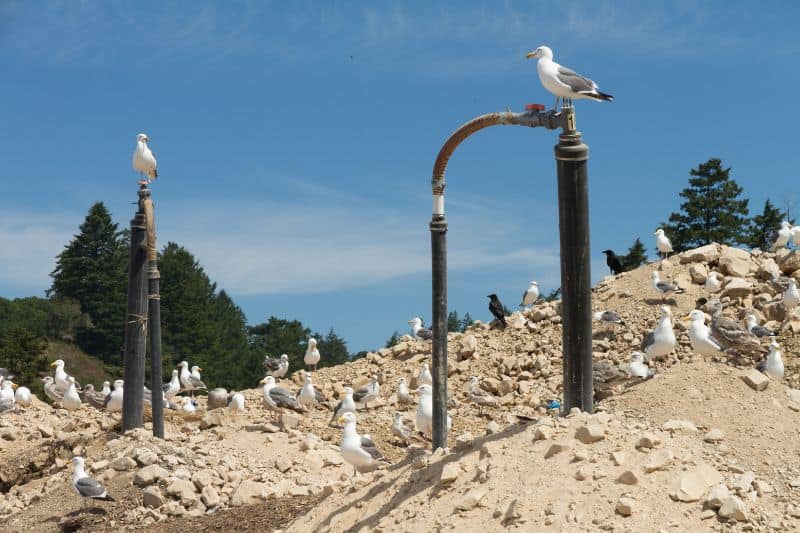
In landfills, as trash accumulates and begins to break down, carbon dioxide and methane are produced.
Municipal solid waste (MSW) landfills are the third-largest human-generated source of methane emissions in the United States, releasing an estimated 95.6 million metric tons of carbon dioxide (CO2).
Using landfill gas (LFG) to generate energy and reduce methane emissions produces positive outcomes for local communities and the environment.
3. Now Landfills are Eco-friendly
These days, the landfill concept has been changed. It is because of the efforts of environmental experts and conservationists who brought in strict laws, regulations, and standards for landfill sites.
Advanced technology is well utilized in the landfills’ design along with good soil lining and leachate management system that ensures no seepage and damage.
4. Landfills Create Jobs and Local Business
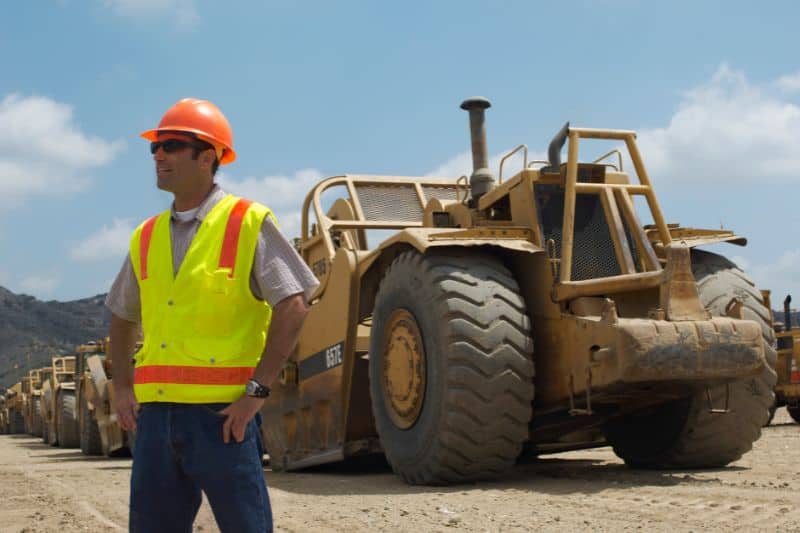
An effective waste management system in any country requires a workforce at every stage. More local landfills generate more job opportunities and better living for the local residents.
5. Keeps Hazardous Waste Segregated
A place is always required to dump recyclable and non-recyclable waste separately and also to keep more hazardous materials that need to be segregated from the public.
6. Landfills are Cheap
As our waste will only have to travel a short distance to landfill, garbage transport costs will be reduced. This will also reduce the amount of pollution caused by transporting rubbish.
How Dangerous Are Landfills?
Despite all the benefits that come with landfills, there’s the other side of the coin that’s just as important to know about.
Let’s look at some of the dangers of landfills:
1. Landfills Affect Human Health
Landfill sites emit poisonous gases that can negatively affect humans, plants, and animals. People living near landfills or having prolonged exposure may suffer from cancer, respiratory disorders, and developmental defects in children.
In fact, even short-term exposures to ammonia and hydrogen sulfide released in the air can cause eye, nose, and throat irritation as well as asthma.
Other reported health complaints include sleeping difficulties, weight loss, and chest pain. Methane and carbon dioxide that are released in the landfill can affect the availability of oxygen to tissues causing coordination issues, fatigue, nausea, vomiting, and unconsciousness.
2. Methane Build-up
Methane is a highly inflammable gas, and it exposes the lives of people living around to the risk of an explosion. In an enclosed space with poor ventilation, methane gas lights up quite easily, and the entire landfill site can be on fire in a blink.
In case you’re wondering whether this is likely, a perfect case in point is what occurred recently in Bangalore’s Bellandur Lake. Sprawling over 900 acres, the lake caught fire owing to the production of methane gas.
3. Soil and Water Contamination
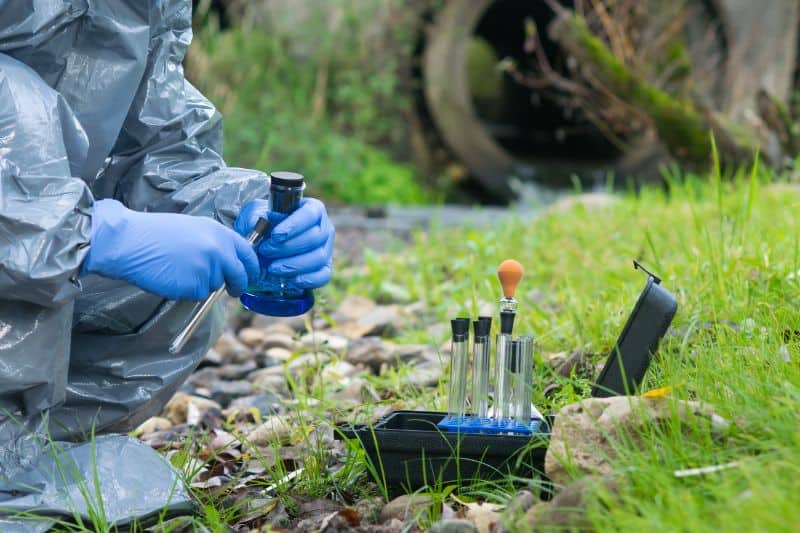
Landfill liners have evolved, and it’s not very common for the protective membranes of landfills to rupture. But they still can, and the sad part is that you can’t retrofit an old one, making it devastating when a rupture happens.
The toxic gases from the rotten trash fuse with the groundwater and produce leachate, i.e., poisonous sludge that seeps down into the ground and mixes with the water underneath.
The infiltrated metals, ammonium, carbons, hazardous chemicals, gases, and other toxins seep from landfills and get mixed with soil and groundwater, causing soil and water pollution. The contaminated water, if not treated well, becomes a part of the water supply in the area.
4. Landfills are One of the Causes of Climate Change
A major disadvantage of a landfill is the release of harmful gases. One ton of biodegradable waste can produce about 400–500 cubic meters of landfill gas that contains methane and carbon dioxide as the major constituents and traces of other gases.
Methane is a greenhouse gas that is 25 times more hazardous than carbon dioxide. Thus, this increases the implications of global warming and climate change.
5. Accident Prone Zone
Landfill sites often become vulnerable to collapses due to rain, spontaneous combustion of gases or materials, or excessive waste accumulation causing damages that are deep and almost irreversible.
The death toll was 113 when a massive landfill outside Ethiopia’s capital, Addis Ababa, collapsed in March 2017. Just a month later, Sri Lanka’s Meethotamulla landfill site suffered a massive collapse, destroying 140 houses and taking 30 lives. In February 2020, two workers lost their lives when the Zaldívar landfill site in Spain collapsed.
